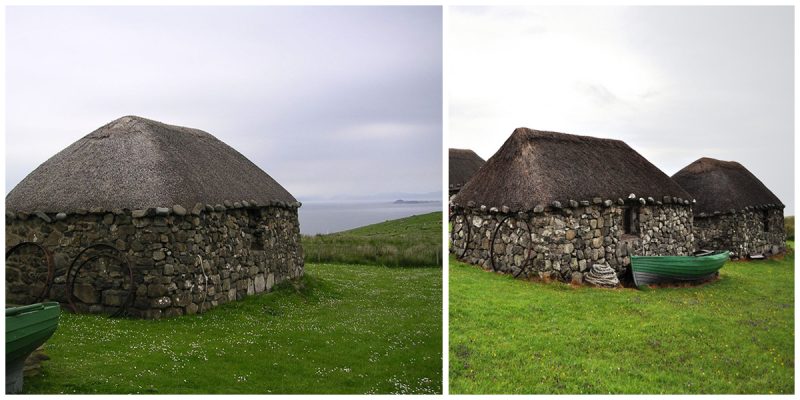Hundreds of years ago the Highlands of Scotland and Ireland were dotted with a type of dwelling called blackhouses. The origin of the name blackhouse is of some debate. It could be less than 150 years old and may have been synonymous with inferiority. The floor generally consisted of flagstones or packed earth, and there was a central hearth for the fire. There was no chimney for the smoke to escape through so the smoke escaped through the roof, slowly blackening the interior, a fact which may have contributed to the adoption of name blackhouse. The smoked thatch was considered an excellent fertilizer and it was normal to strip it off for this purpose and rethatch the roof each year.
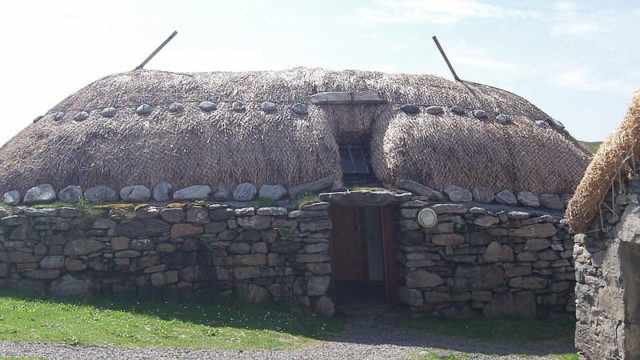
Another theory is that the blackhouses were not named because of their smoke-filled rooms and black roofs but because they were compared to new houses, called “white houses“ that were being built in the late 1800s, so the term “black house” was then applied to the old houses. The immediate origins of the blackhouse are unclear as few pre-eighteenth century examples have ever been excavated.
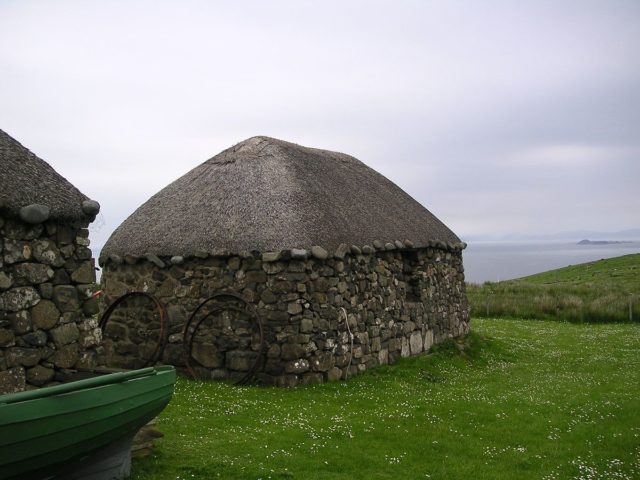
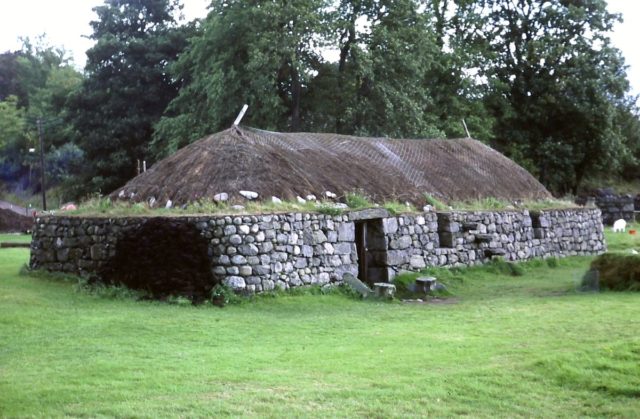
The buildings were generally built with double wall dry-stone walls packed with earth, often laid in parallel to other blackhouses, and were roofed with wooden rafters covered with a thatch of turf with cereal straw or reed. These blackhouses were used to accommodate livestock as well as people. People lived at one end, and the animals lived at the other with a partition between them. Part of the blackhouse was also used as a barn for storage and processing of grain and other products.
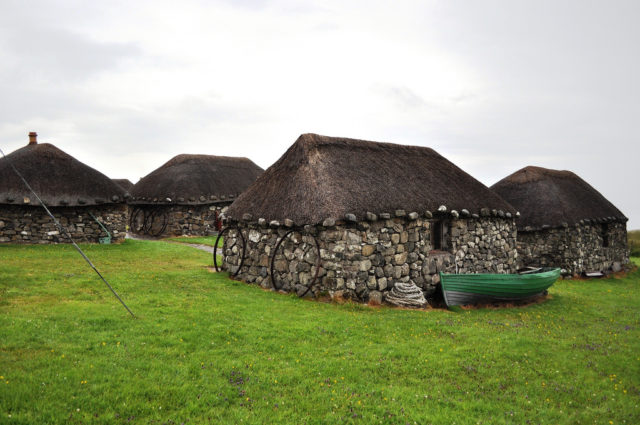
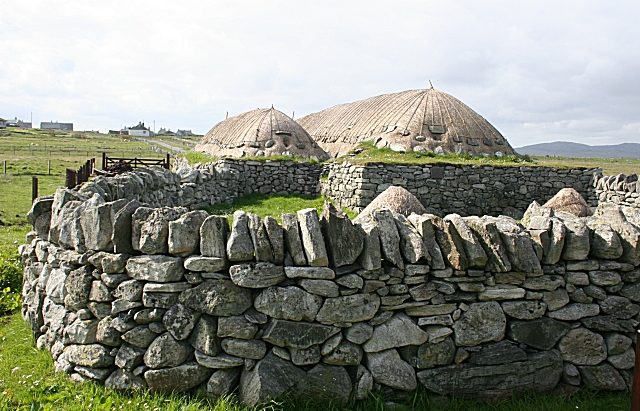
One of the best places to see blackhouses is at the Isle of Lewis, in the Outer Hebrides. Although the Lewis blackhouses have a look of real antiquity, most of the upstanding ruins were built less than 150 years ago. The Lewis examples have clearly been modified to survive in the tough environment of the Outer Hebrides. Low rounded roofs were developed to resist the strong Atlantic winds and thick walls to provide insulation and to support the sideways forces of the short driftwood roof timbers.
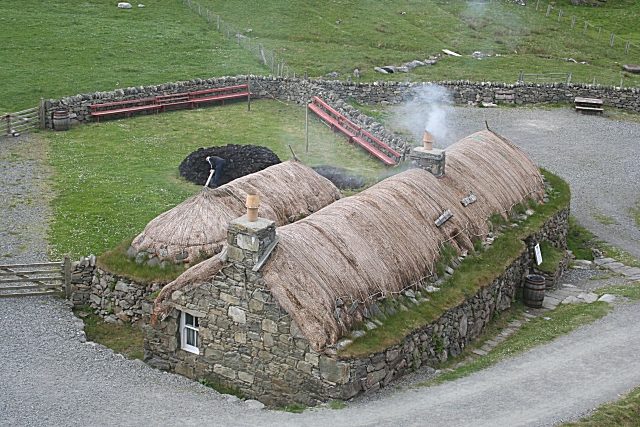
In the village of Gearrannan, there are several restored blackhouses as well as a museum. In the village of Arnol too, there are ruins of blackhouses everywhere and few of them are still roofed. One blackhouse has been carefully preserved since the occupants moved out in the 1960s and also turned into a museum.
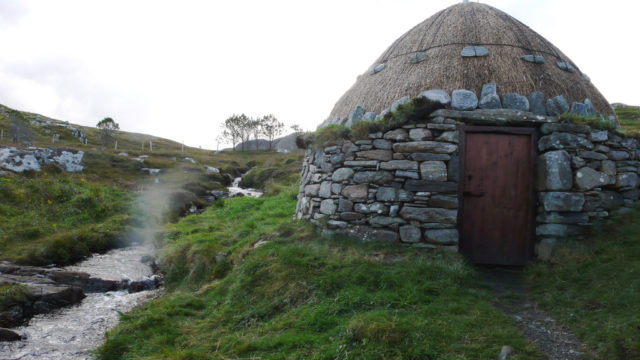
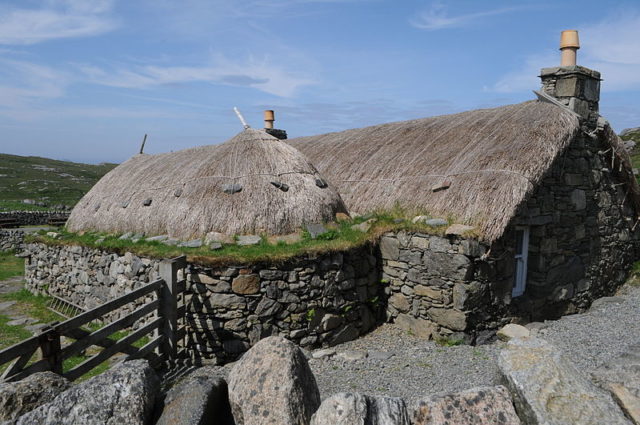
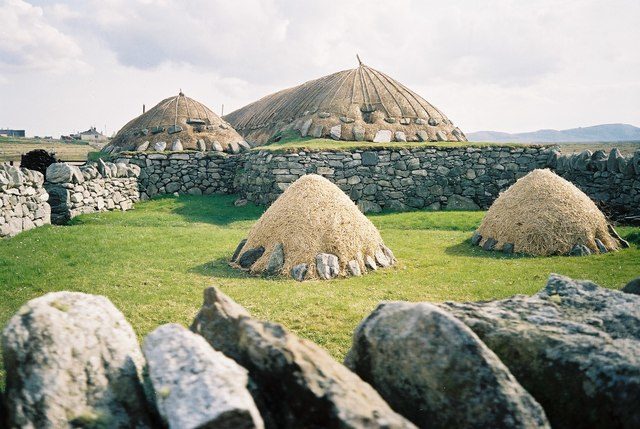
Many were still roofed until the 1970s but without the necessary annual repairs deteriorated rapidly; as people moved into more modern dwellings with indoor plumbing and better heating, most have fallen into ruin. However, blackhouses are increasingly being restored, especially for use as holiday accommodation.
